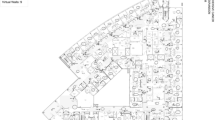Abstract
Background
Despite the significant expense of OR time, best practice achieves only 70% efficiency. Compounding this problem is a lack of real-time data. Most current OR utilization programs require manual data entry. Automated systems require installation and maintenance of expensive tracking hardware throughout the institution. This study developed an inexpensive, automated OR utilization system and analyzed data from multiple operating rooms.
Study design
OR activity was deconstructed into four room states. A sensor network was then developed to automatically capture these states using only three sensors, a local wireless network, and a data capture computer. Two systems were then installed into two ORs, recordings captured 24/7. The SmartOR recorded the following events: any room activity, patient entry/exit time, anesthesia time, laparoscopy time, room turnover time, and time of preoperative patient identification by the surgeon.
Results
From November 2014 to December 2015, data on 1003 cases were collected. The mean turnover time was 36 min, and 38% of cases met the institutional goal of ≤30 min. Data analysis also identified outlier cases (>1 SD from mean) in the domains of time from patient entry into the OR to intubation (11% of cases) and time from extubation to patient exiting the OR (11% of cases). Time from surgeon identification of patient to scheduled procedure start time was 11 min (institution bylaws require 20 min before scheduled start time), yet OR teams required 22 min on average to bring a patient into the room after surgeon identification.
Conclusion
The SmartOR automatically and reliably captures data on OR room state and, in real time, identifies outlier cases that may be examined closer to improve efficiency. As no manual entry is required, the data are indisputable and allow OR teams to maintain a patient-centric focus.





Similar content being viewed by others
References
Malangoni MA (2006) Assessing operating room efficiency and parallel processing. Ann Surg 243(1):15–16
Stepaniak PS, Mannaerts GH, de Quelerij M, de Vries G (2009) The effect of the operating room coordinator’s risk appreciation on operating room efficiency. Anesth Analg 108(4):1249–1256
Rotondi AH, Brindis C, Cantees KK, DeRiso BM, Ilkin HM, Palmer JS, Gunnerson HB, Watkins WD (1997) Benchmarking the perioperative process. I. Patient routing systems: a method for continual improvement of patient flow and resource utilization. J Clin Anesth 9(2):159–169
Xiao Y, Hu P, Hu H, Ho D, Dexter F, Mackenzie CF, Seagull FJ, Dutton RP (2005) An algorithm for processing vital sign monitoring data to remotely identify operating room occupancy in real-time. Anesth Analg 101(3):823–829
Epstein RH, Dexter F, Piotrowski E (2008) Automated correction of room location errors in anesthesia information management systems. Anesth Analg 107(3):965–971
Lapierre SD, Batson C, McCaskey S (1999) Improving on-time performance in health care organizations: a case study. Health Care Manag Sci 2(1):27–34
McIntosh C, Dexter F, Epstein RH (2006) The impact of service-specific staffing, case scheduling, turnovers, and first-case starts on anesthesia group and operating room productivity: a tutorial using data from an Australian hospital. Anesth Analg 103(6):1499–1516
Huang AY, Joerger G, Salmon R, Dunkin B, Sherman V, Bass BL, Garbey M (2016) A robust and non-obtrusive asutomatic event tracking system for operating room management to improve patient care. Surg Endosc 30(8):3638–3645
Garbey M, Joerger G, Huang A, Salmon R, Kim J, Sherman V, Dunkin B, Bass, B. (2015) An intelligent hospital operating room to improve patient health care. J Comp Surg 2(3):1–10
Acknowledgements
National Science Foundation NSF 106022—Full Center Grant: I/UCRC for Cyber-Physical Systems for the Hospital Operating Room.
Author information
Authors and Affiliations
Corresponding author
Ethics declarations
Disclosures
Albert Y. Huang, Guillaume Joerger, Vid Fikfak, Remi Salmon, Brian J. Dunkin, Barbara L. Bass, and Marc Garbey have no conflicts of interest or financial ties to disclose.
Rights and permissions
About this article
Cite this article
Huang, A.Y., Joerger, G., Fikfak, V. et al. The SmartOR: a distributed sensor network to improve operating room efficiency. Surg Endosc 31, 3590–3595 (2017). https://doi.org/10.1007/s00464-016-5390-z
Received:
Accepted:
Published:
Issue Date:
DOI: https://doi.org/10.1007/s00464-016-5390-z




